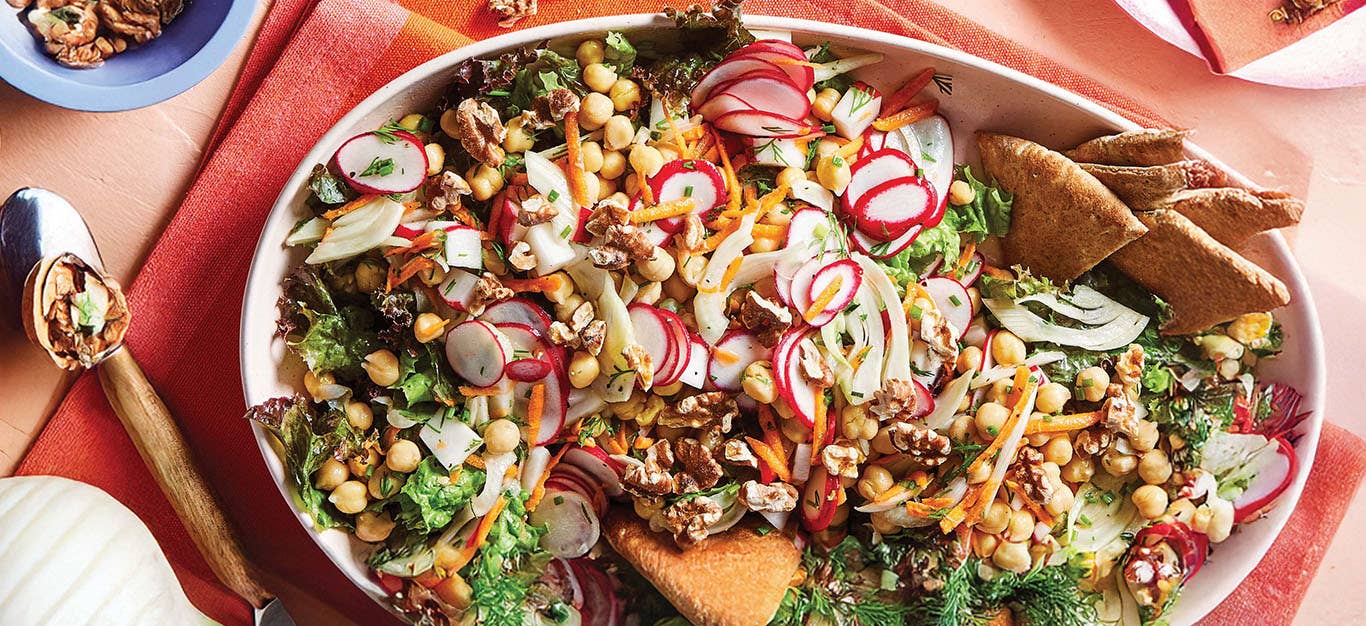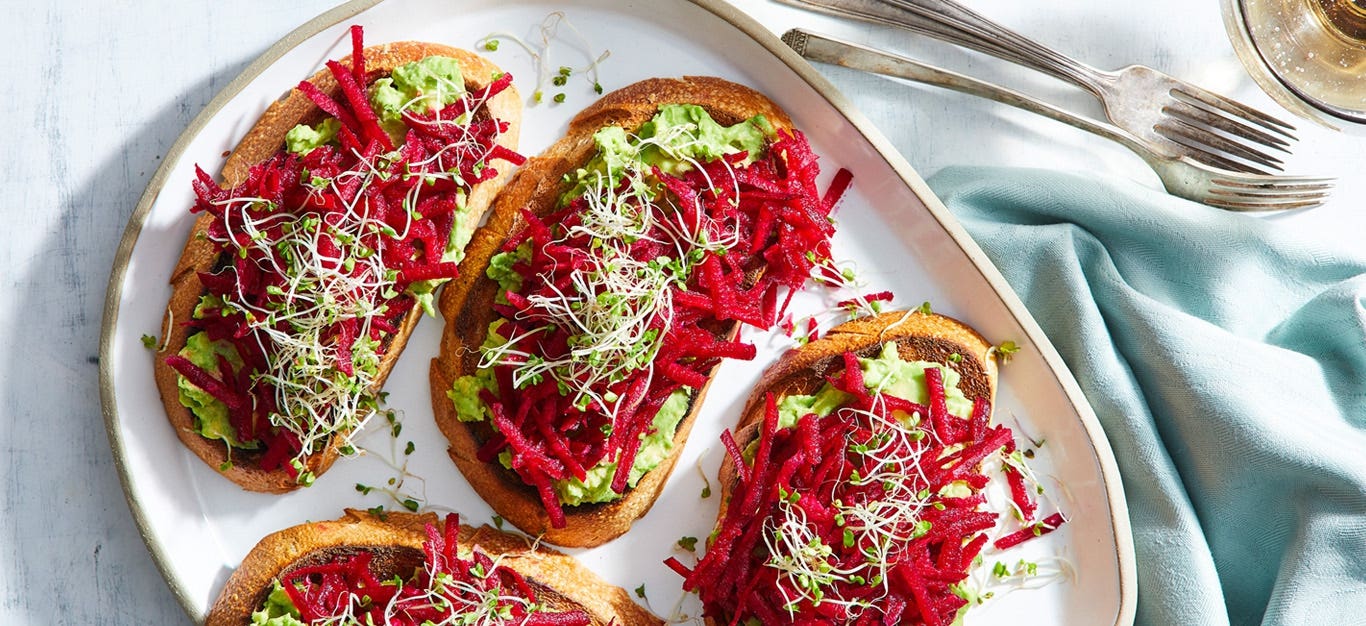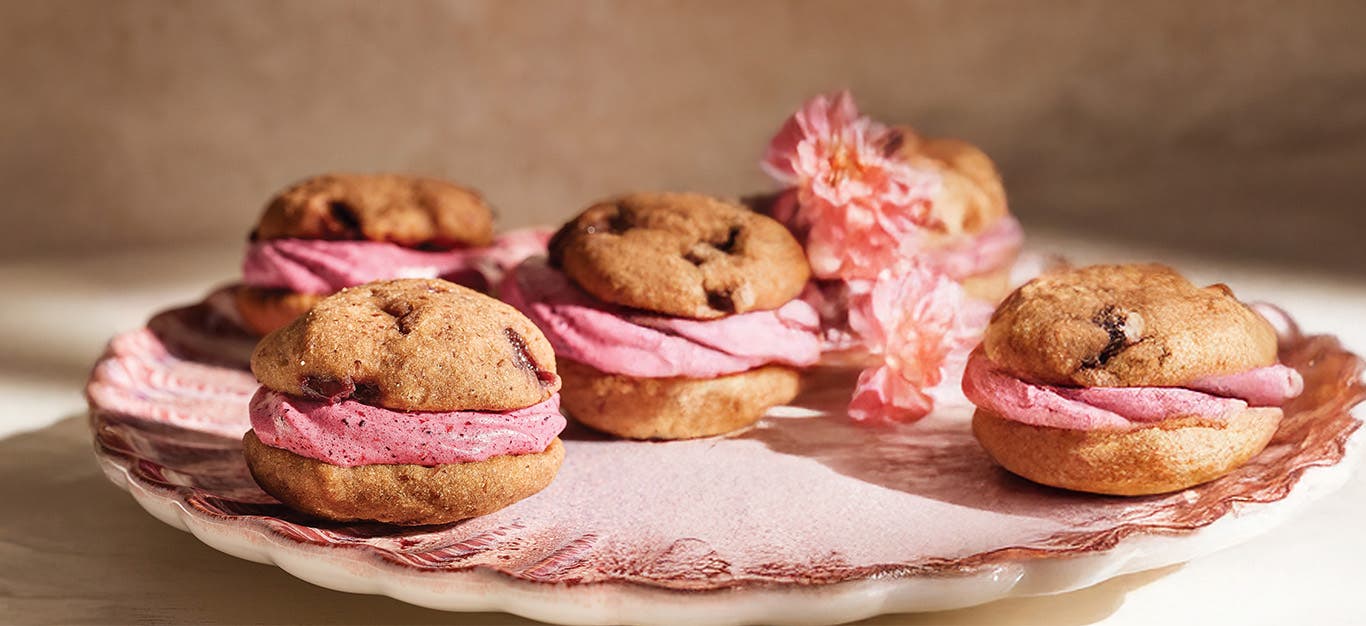- Prep-time: / Ready In:
- Makes an 8x4-inch loaf (18 slices)
- Serving size: 2 slices
- Print/save recipe
Occasionally, you come across a recipe that's truly life-changing. That was the case for me earlier this year, when I first heard of Sarah Cobacho’s single-ingredient buckwheat bread. The concept immediately piqued my interest: Despite being gluten-free for over 20 years, I’d never known it could be so easy to make a gluten-free loaf of bread at home. (Confusing name aside, buckwheat is a member of the rhubarb family and does not contain gluten.)
Much to my delight, homemade buckwheat bread is not only a cinch to make but also moist, sturdy, and delicious. It costs a fraction of the price of store-bought whole grain bread. It requires just 15 minutes of active prep time and one ingredient—raw hulled buckwheat groats. You don’t even need yeast! Plus, it freezes well and is packed with nutrients.
After several months of experimentation and dozens of loaves, I settled on the version below. I like it because it yields a large loaf and is super simple to make—no need to weigh out ingredients.
Read on for answers to some frequently asked questions, plus my go-to recipe.
FAQs
What type of buckwheat should I use?
One of the most critical decisions in the whole process is choosing the right groats. You need to use raw, hulled buckwheat groats, which are pale and yellowy-green (image on the right below). Roasted buckwheat groats (kasha), which are distinguishable by their darker brown color (see image on the left below), will not work.
Can I make this if I don’t have a high-speed blender?
Yes. You can use a food processor or stick blender instead of a high-speed blender in Step 2, but you may need to blend longer (a few minutes) to properly break down the groats. If using a food processor, add the water gradually so it doesn’t leak out—the food processor will be very full! If it gets too full, process the groats in batches.
Can I freeze buckwheat bread?
Yes, just be sure to slice it first; then place it in an airtight container. Freeze for up to 2 months.
What if I accidentally leave the groats soaking for longer than 6 hours?
No problem. The shortest time you want to leave them is 5 hours, but it’s fine to soak them overnight. The distinctive buckwheat flavor becomes stronger the longer you leave it.
Why does it smell funny? Is it safe to eat?
After the slurry sits for 24 hours, it may smell funny. This is normal; it is a product of fermentation. Eating fermented whole plant foods can help promote gut health.
I want to cut it immediately. Do I really have to wait for it to cool down?
It slices better and is firmer if you wait, but if you want to lop off a slice or two, go for it. The rest of the loaf will firm up nicely.
This seems complicated …
It’s really not! After you’ve made it once or twice, it’s easy to get into a routine and time the steps to fit into your schedule.
Buckwheat Bread Recipe (Gluten-Free)
My family has this buckwheat bread recipe on repeat. You’ll want to keep a loaf on hand to enjoy with your favorite spreads and toppings alongside stew or soup or cut into bite-size pieces and served with a plant-based dip. It’s especially good sliced thinly and double- or triple-toasted!
Adding nuts and seeds: If you like nuts and/or seeds in your bread, feel free to stir some into the batter in Step 3, before covering with a clean dish towel and letting the mix ferment. (You can also stir in nuts and seeds after it’s fermented; just be sure to stir gently so you don’t disturb the tiny air pockets that have formed.) You can also sprinkle nuts and seeds over top of the loaf just before baking. Sesame seeds, pepitas, poppy seeds, chia seeds, flaxseeds, or sunflower seeds all work well.
Equipment
- Large glass bowl or ceramic bowl
- High-speed blender (or food processor or immersion blender; see tip above)
- 8x4-inch loaf pan
- Parchment paper
By Lisa Esile, MS,

Ingredients
- 3 cups raw hulled buckwheat groats (see tip, recipe intro)
- ½ teaspoon sea salt (optional)
Instructions
- Rinse groats under cold water. Remove any remaining black husks or other debris. Place groats in a large glass or ceramic mixing bowl and cover with water, ensuring groats are covered with at least 1 inch of water. Leave to soak for 5 to 7 hours.
- The groats will be swollen, and the liquid will have a gelatinous quality; you want this. Drain groats in a sieve for about 30 seconds, you don’t need to get all the water out. Do not rinse! Transfer groats to a high-speed blender. Add 1½ cups fresh water and, if using, salt. Cover and blend until you have a smooth, pancake batter–like consistency. (If using a food processor or immersion blender, see tips above.)
- Rinse out the bowl used to soak groats. Transfer blended groats back to bowl. Cover with a clean dish towel and place on the counter or somewhere warm for about 24 hours, or until the batter has increased in size by about a third. The time this takes will vary depending on the temperature of the room. If you live in a very warm climate, it may take as little as 6 to 8 hours, and if you live somewhere cool, you may need to put it in the oven with the light on.
- Line an 8x4-inch loaf pan with parchment paper, using enough paper so that there’s 1–2 inches of overhang on the long sides of the pan. Carefully pour the mix into the pan. If you like, top with nuts or seeds. Put the pan in the oven; then set the oven to 350°F. Bake for 80 to 90 minutes, until crusty on top.
- Remove from the oven. Leave loaf in the pan for 10 minutes, then, grabbing the edges of the parchment paper, lift it out and let it cool on a wire rack or on the counter or another clean surface for another 30 minutes before slicing. For storage, wrap loaf in parchment paper or a clean dish towel and place in an airtight container in the refrigerator up to 5 days or in the freezer up to 2 months.
Per serving (2 slices): 210 calories, 44 g carbohydrates, 8 g protein, 2 g total fat, 0 g saturated fat, 0 g cholesterol, 130 mg sodium, 7 g fiber, 0 g sugar
Note: Nutritional information is provided as an estimate only.




Comments (41)
(5 from 6 votes)This bread is SO good!!! I made it just plain for my first try, and this recipe is definitely a "keeper"! Next batch will be Rosemary bread...
I bought Arrowhead Mills organic buckwheat flour awhile ago and see that it won't work for making this bread. What recipes can you give us to use the buckwheat flour?
Try these buckwheat pancakes! https://www.forksoverknives.com/recipes/vegan-breakfast/gluten-free-chocolate-chip-pancakes/
I just made this. I tried to follow the recipe exactly… it took two days. The outside is nice and crispy, but the inside is rather goopy. I’m not sure where I went wrong. I’m going to slice it vey thin and make crackers from the loaf.
Hi Pam, It sounds like it didn't ferment as much as it should have. Did you use raw buckwheat groats (not the roasted ones)? Was your mixture quite runny and not too stodgy? Did you let the loaf cook before you cut it? I left my groats to strain the other day and ended up over-draining them, and my loaf was very small and more dense than usual. I hope you try again - once you get the knack of this it's such a wonderful recipe.
My buckwheat bread was done on the outside but not on the inside. Any recommendations?
Is this bread also without any malted ingredients. I have a severe malt allergy.
This bread was easy to make and tasty. I did add 1/2 teaspoon of salt and topped it with sesame seeds. Also in my cooler 1911 house during the Colorado winter makes for longer fermentation, I let it ferment for approximately hours. Can't wait to try the shredded coconut and raisins suggestions! Thanks everyone and thanks to Forks over Knives for sharing wonderful, wholesome recipes.
I have made the bread and it's tasteless, heavy. Tried to cut it thin and toast it, still not to my liking. It wasn't cheap to make and it took a lot of time, not worth the trouble. Now store bought bread has improved and is healthier. A waste of my time.
Hi Jane, Sorry to hear if wasn't to your liking. The trick to making this more cheaply is watch where you source your buckwheat groats as there is a huge variation in price depending on where you get them from. Once I knew I wanted to make it regularly, I hunted down bulk buckwheat groats and am able to make it for under $3 a loaf. (I get mine from Azure Standard).
I already have buckwheat flour, can I use your recipe ??
Hi Eva, No. Buckwheat flour won't work here.
Curious- why does mixing bowl need to be glass or ceramic? I only have metal and plastic- is there a reason they won’t work?
Hi Maryanne, Glass or ceramic containers are recommended for fermenting as they're considered the most chemically stable (inert), and thus won't interfere with the process. Metal is not recommended. Some stainless steel may work if it is non-reactive. Plastic is not recommended as it can have fine cuts which can harbor unwanted bacteria.
Love this bread! The taste is too strongly buckwheat & bitter for me with only buckwheat. Before adding it to the baking pan, I mix in half a cup shredded coconut and same in raisins to sweeten it. I've never tried other grains.
Hi Devra, Ooh, that sounds yummy. I'm going to try it! Thanks for the tip. A loaf made from half buckwheat, half oats (I use steel cut oats, though I'm sure oat groats would work, too) has a softer flavor than straight buckwheat.
Glass or metal loaf pan?
Hi Alyssa, Either would be fine because you’re using baking paper.
I love buckwheat and I love fermenting and this sounds really interesting so I am def going to give it a try. There is info about serving size but not about the number of servings (unless I missed something, but I've checked a couple times)- how many slices would we expect? I was thinking 12 for an 8" x 4" bread pan.
Regardez juste en dessous de la photo, juste en dessous de temps de préparation. C'est écrit : donne un pain de 8 x 4 po ( 18 tranches)
it says at the top 18 slices
The nutritional information was calculated based on a loaf yielding 18 slices (9 servings at 2 slices per serve, roughly speaking). It sounds like a lot of slices, but we often get more. The loaf is so firm once it’s cooled that it’s easy to get a nice thin slice (if that’s what you like). The number of total slices got left out of the recipe by mistake, so you didn’t miss it! Please let us know how it goes!
Where does one buy raw hulled buckwheat groats? Guessing my local grocery store doesn't carry them....
I buy them at Natural Grocers. My local WINCO only sells toasted buckwheat in bulk.
I order them from Azure Standard. Other health food or natural markets would also be likely to carry them.
Yep, the microbes on the grain cause it to ferment and leaven like sourdough, increasing nutrients in the process. I've done this using other grains too, like steel cut oats, quinoa, kamut, sorghum, brown rice, etc., and often add red lentils or urad dal to the mix for added fiber and nutrients, like Indians do when making idli. I have fun experimenting and and combining -- some work better than others, but so far all have been edible and tasty.
I have been making this for years, maybe 6 years. Love it.
Yes I learned this from an online health class…..I have made this bread, but I soak for 12 hrs, then sprout it for 12 hours then I add lemon juice, and salt and water. I also ad sprouted pumpkin seeds or sprouted sunflower seeds. I love this toasted well with avocado or any fruit topping,
Lily, how much lemon juice, salt and water do you add, and at what stage? Thanks! Justina
Can you use Oat Groats for this recipe?
Hi Paul, I've never used all oat groats, but it's next on my list of experiments to try. As another commenter reports, the bread is very flexible and works well with other grains. We make it a lot with half buckwheat groats and half steel cut oats. We accidentally put rolled oats in the other day (along with buckwheat). It was still edible but much heavier; didn't have nearly the same number of air pockets as it normally does. (I wouldn't advise rolled oats!)
Why does it rise? Does it develope a natural yeast???
Hi Abi, The natural yeast/bacteria in the air and on the grain ferment, creating bubbles of carbon dioxide, which is what makes it rise.
I have been making this bread for a couple years now, it's great! I add in some spices while blending to give it a little more taste. You can almost overspice it and it'll be good the buckwheat tempers the spice. I would urge anyone to definitely try this bread.
Tom, what spices do you recommend? Thx!
Has anyone tried this other than the contributor?
I'm about to! As a chef, I appreciate simplicity and I sense a good thing when I see one! I can't wait.